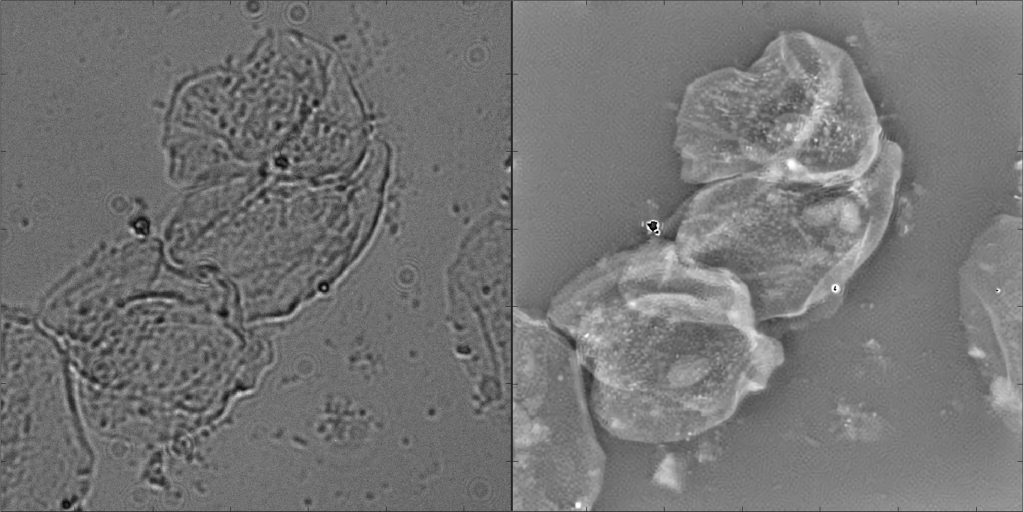We believe in OPEN SOURCE
Explore the software we’ve shared in the fields of Lensless Microscopy, Fourier Ptychography, and Optical Fringe Pattern Processing.
We invite you to build on our work and help advance scientific progress!
Lensless Microscopy
In-line holography muti-height Gerchberg-Saxton phase retrieval with automatic affine transform
In-line holography muti-height Gerchberg-Saxton phase retrieval with automatic affine transform – firstly, each in-line hologram is reconstructed (propagated to the object plane), then ‘AutoAffineTransform.m’ function is applied to extract and match features between n-th and last reconstruction. Basing on these features, affine transforms (AT) are estimated and applied to the input holograms to correct the xy shift and magnification mismatch between holograms. fter this preprocessing step, Gerchberg-Saxton (GS) multi-height algorithm is performed to retrieve object phase with minimized twin image noise comparing to single-frame angular spectrum backpropagation.
Author: Mikołaj Rogalski
UTIRnet
UTIRnet – supervised universal convolutional neural network for twin-image effect removal in digital in-line holographic microscopy (DIHM). UTIRnet is trained fully on numerically generated images, which makes it a easy to adapt for any DIHM system (no collecting and labelling experimental training data is required).
Author: Mikołaj Rogalski
DarkFocus - autofocusing algorithm for lensless digital in-line holographic microscopy
dark field
dark field gradient
DarkFocus – autofocusing algorithm for lensless digital in-line holographic microscopy (DIHM). Basing on the given range of distances, it finds the distance between the hologram and object focus plane in fully automatic fashion. Thanks to the darkfield propagation, DarkFocus is works as well for amplitude (absorbing) as for phase (transparent) objects.
Author: Maciej Trusiak
DarkTrack
DarkTrack – algorithm for tracking small objects in 3D (x,y,z) in lensless microscopy. It employs simple binarization and segmentation procedures to localize objects in x,y and then with the use of DarkFocus, it finds focus distance (z location) of each object inside field of view. If provided with a set of holograms, then it is also linking detected objects in adjacent frames to provide temporal tracking.
Author: Mikołaj Rogalski
Fourier ptychography
Fourier ptychographic microscopy (FPM)-app

FPM app – GUI application for Fourier ptychographic microscopy reconstruction, that was designed to work with datasets collected with LED array microscope. User-friendly interface allows for simple adjustment of LED array used in the experiment along with other system parameters. FPM app also enables simulating FPM system and creating synthetic FPM datasets.
Author: Mikołaj Rogalski
Optical fringe pattern processing
DeepOrientation

fpFIF2 - 2D fringe pattern Fast Iterative FIltering

DeepDensityNetModel

iPG-BEMD - improved period guided bidimensional empirical mode decomposition algorithm
